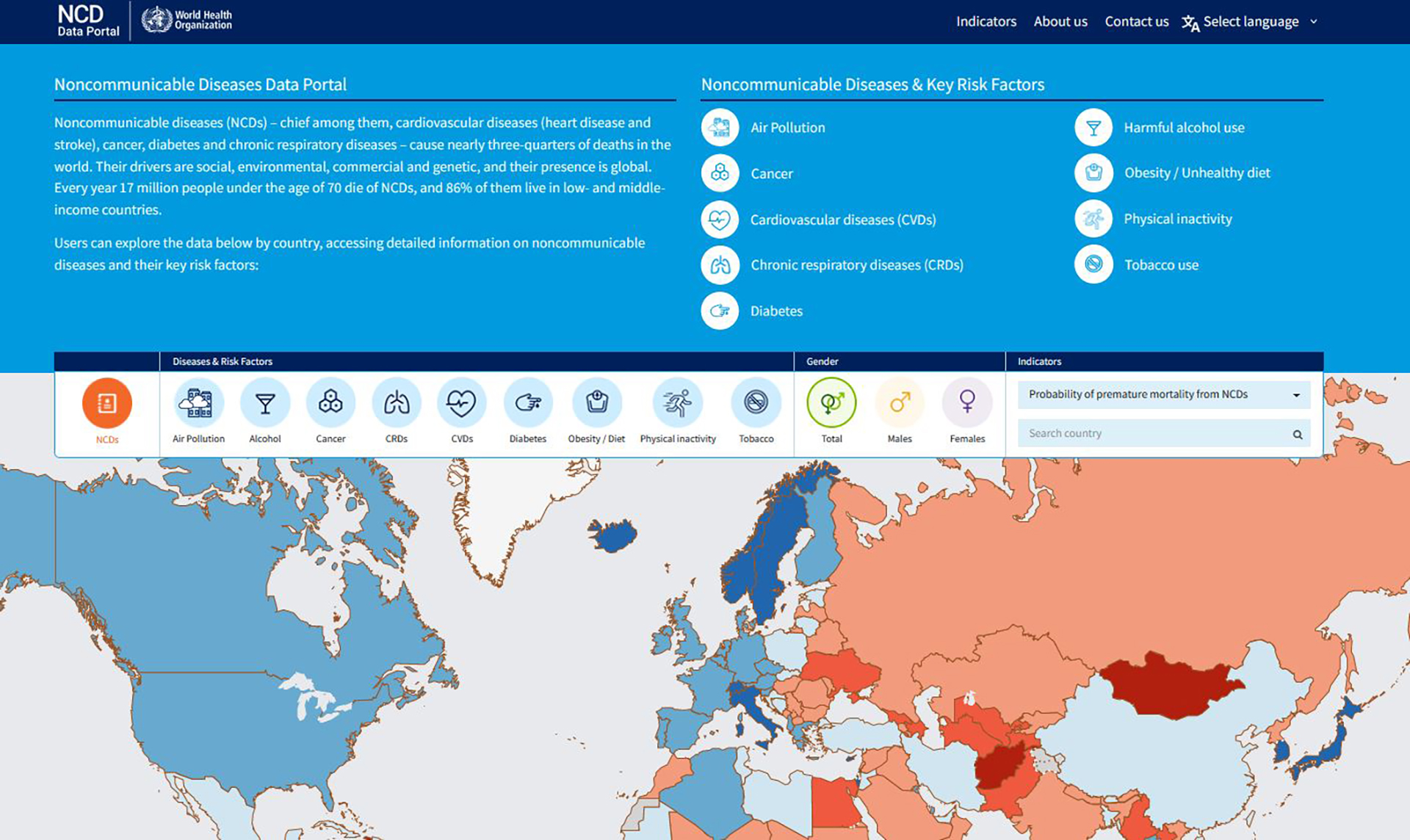Episode #129 - Is pollution causing your COPD?
Alternative media
Related links
Transcript
VGS We're standing next to this big no smoking sign in the W.H.O. headquarters. And also we're standing next to a very busy street. Air pollution and smoking. Two of the biggest risk factors for chronic obstructive pulmonary disease. We are going to talk to Doctor Sarah Rylan today about COPD. Sarah, a lot of people may not know what chronic obstructive pulmonary disease or COPD is, even if they may have the disease and may not know how to recognize it. Talk to us about what it is.
SR So COPD is a group of conditions which affect the lungs of adults and cause obstruction of the airways, chronic bronchitis or emphysema or other terms that you might have heard to talk about this. In COPD, we have damage and we have inflammation to different parts of the airways. Depending on which parts are affected, it can affect people differently, and this can lead to different symptoms.
VGS So, Sarah, if people have COPD, how would they know what is actually happening inside us?
SR So the symptoms of COPD come on slowly and often become worse gradually. Someone might notice, for example, that they are having difficulty going about their normal daily life. Sometimes people notice first that they're having difficulty in walking, particularly going up a hill. Or if they have to take the stairs, they may become breathless. As things progress, it might become that they then start to find it difficult to get dressed in the morning, for example, or to do normal daily household chores.
In severe cases, it can become so bad that people are breathless even when they are talking or eating. Sometimes symptoms can become suddenly worse as well. This is called a flare-up or an exacerbation. At that time, people would need to get additional medical treatment. Sometimes they even needed to be admitted to hospital for that. The exact symptoms depend on what is happening inside of the lungs.
So if I have chronic bronchitis, then my airways are inflamed. They're swollen, there's mucus. And so if I have that, then I will be coughing or I'll be coughing up phlegm or mucus. And I might also be breathless. In emphysema, we find that at the end of the airways there are little air sacs, and these can become damaged.
And then air collects in these air sacs, and it means that people can't breathe out fully, so their lungs are overinflated. They have this feeling of their lungs being full all of the time, and it creates a feeling of breathlessness.
VGS Other than smoking and air pollution, what are the causes of COPD?
SR There are lots of different things that can cause COPD. In the past, people really attributed COPD to smoking, and your risk of COPD increases with the more cigarettes that you smoke every day or the longer that you've smoked for. But we now know there are other things too. Air pollution is one that you've mentioned. This could be indoor air pollution.
So exposure through when people are cooking on biomass fuels, for example, like wood or charcoal inside an enclosed space, or outdoor air pollution from traffic or from industry factories, these kinds of things.
VGS Are some people more susceptible to COPD?
SR So actually, yes, our lungs start growing and developing even before we are born, and they continue to grow and develop throughout childhood, throughout teenage years until they reach their maximum potential in your early 20s. If you're exposed to things during that period of lung growth and development that stop your lungs from growing and developing in this way, then this means that you never reach that full potential and you're at increased risk of COPD.
If your mother smokes, or is exposed to air pollution or tobacco smoke during pregnancy. If you're born very small or born early, if you have severe respiratory infections during childhood, all of these things impact your lung growth and development. That means you reach adulthood without having grown your lungs to their full size, if you like.
So you're at more risk of developing COPD. Asthma is another risk factor. If people have asthma in childhood, particularly if it's poorly treated, then that can be a risk factor. There are also some genetic conditions that can predispose to COPD.
VGS That’s actually alarming, that if a mother is breathing air pollution and is a smoker, then the chances of the child developing COPD increases—especially alarming because nine out of ten people are breathing air that's unhealthy for them. Is there a treatment for COPD?
SR If COPD is diagnosed early and appropriate treatment is started promptly, then people with COPD can live as full of a life as possible. Remember, it's not normal to be breathless, and it's not just people who smoke that get COPD. The important things are firstly, stop smoking if people smoke. Secondly, to take regular exercise, and there are special programs called pulmonary rehabilitation for people with COPD to help strengthen their lungs.
Thirdly, there are various inhaled treatments that are available which work in different ways inside the lungs that can be helpful. Lastly, it's very important to protect from infection. So if someone has COPD, it's really important that they get vaccinated against flu and Covid, for example, other respiratory infections.
VGS Thank you, Sarah. That was science and five today. Until next time then, stay safe, stay healthy, and stick with science.



